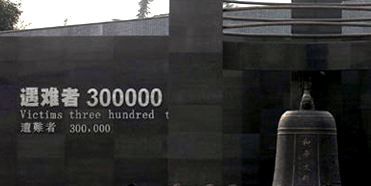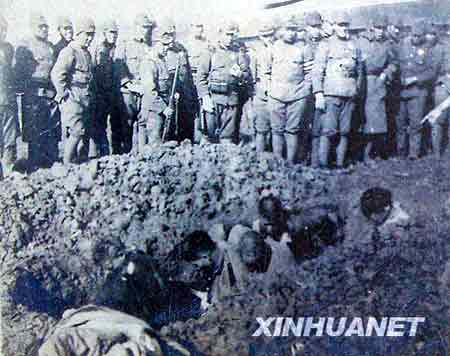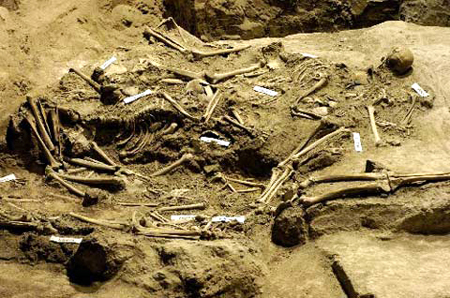
During the Second World War, Nanjing was the scene of one of that conflict's greatest and most terrible atrocities, the Nanjing Massacre, also known as the Rape of Nanjing.
In December of 1937, Nanjing, at that time the capital of China, fell to the invading Japanese army. After taking the city, the Japanese army unleashed an orgy of violence on the Chinese inhabitants of the city.
The massacres, indiscriminate killings, rapes, and tortures continued for much of the winter, leaving almost 300,000 dead. The massacre was shocking not only for the huge number of victims, but for the appalling sadism of the Japanese soldiers, who coldly killed their victims in a variety of gruesome ways.

To commemorate this event and make sure that future generations fully understood its tragedy, the Nanjing Massacre Memorial Museum was built. It is located at the Mass Graves, one of the massacre sites.

Amidst many trees and plain granite walls, abstract sculptures convey the immense suffer, pain, and loss of the massacre. An exhibition hall uses video, photographs, documents, and scholarly analysis to teach visitors about the terrible scope of the violence, and one of the mass graves has been excavated, and the skeletons of the murdered bear silent witness to the crimes of the past.
The final hall of the memorial is dedicated to the reconciliation between the people of Japan and China. The memorial complex is a very moving reminder of the time which must not be forgotten.